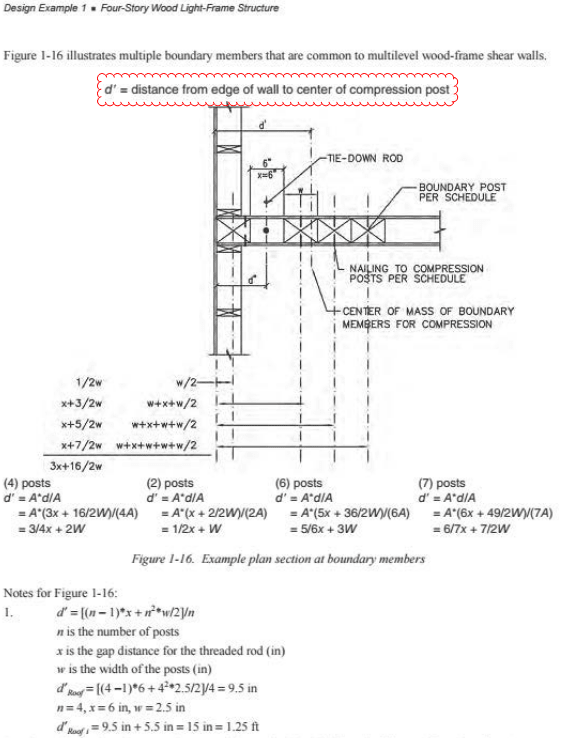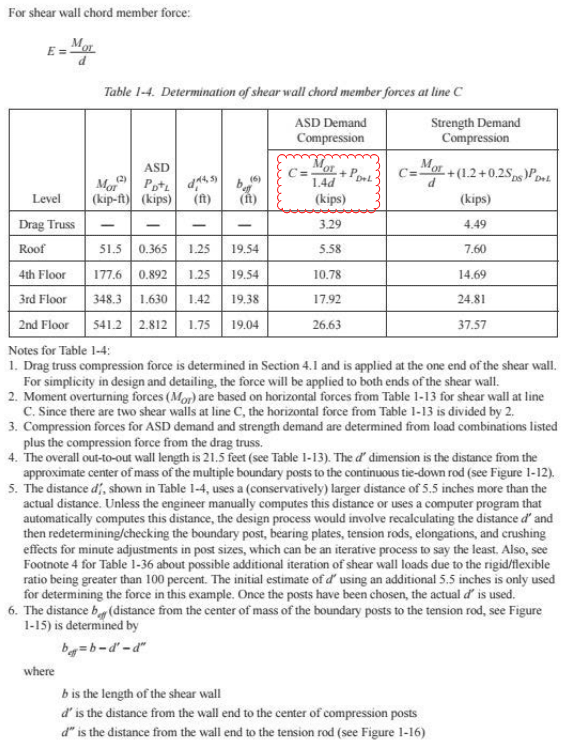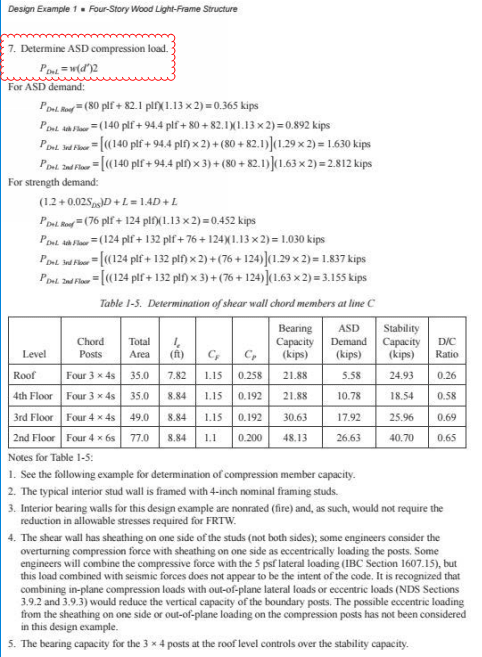YoungGunner
Structural
I want to disagree with the Breyer's textbook about including distributed dead loads in the compression force in a chord for a shear wall. Points loads that the chord normally supports vertically yes, but not distributed loads across the entire wall. Here is why:
1. The SDPWS starts by using the same equation for the compression and tension in the chords. For the tension, the code specifically implies in 4.3.6.4.2 that the dead load may be used as a stabilizing moment to reduce the effect of tension. However, the code does not imply anywhere that an increase in the chord forces from that same dead load is required. I assume then, that theory of adding the load to the compression force came from the idea of "well, it was subtracted from the uplift."
2. It makes sense to me that a distributed load would help prevent an entire wall from lifting up on one end. I don't picture the distributed load assisting as if the wall is spanning chord to chord, but that the dead load over each portion of wall provides some resistance to it's own sphere, which ultimately prevents the whole wall from lifting (assume the dead load is enough to prevent uplift). However, to say that these vertical forces are amplifying the chord forces would imply that the wall has to span chord to chord - but the wall is much too flimsy to do that. The vertical distributed dead load remains supported by the distributed series of studs and headers, so it feels unnecessary that the chords would suddenly experience that force as if the studs weren't present.
Anyone want to provide additional insight?
1. The SDPWS starts by using the same equation for the compression and tension in the chords. For the tension, the code specifically implies in 4.3.6.4.2 that the dead load may be used as a stabilizing moment to reduce the effect of tension. However, the code does not imply anywhere that an increase in the chord forces from that same dead load is required. I assume then, that theory of adding the load to the compression force came from the idea of "well, it was subtracted from the uplift."
2. It makes sense to me that a distributed load would help prevent an entire wall from lifting up on one end. I don't picture the distributed load assisting as if the wall is spanning chord to chord, but that the dead load over each portion of wall provides some resistance to it's own sphere, which ultimately prevents the whole wall from lifting (assume the dead load is enough to prevent uplift). However, to say that these vertical forces are amplifying the chord forces would imply that the wall has to span chord to chord - but the wall is much too flimsy to do that. The vertical distributed dead load remains supported by the distributed series of studs and headers, so it feels unnecessary that the chords would suddenly experience that force as if the studs weren't present.
Anyone want to provide additional insight?



